Guiding methods for router cutters |
||||
 |
||||
 |
For consistent results of the highest quality, it is better to use some form of guide when using a router rather than attempting to cut freehand. |
|||
Router cutters with tip-mounted guides |
||||
 |
These types of guide are an integrated part of a router cutter. They can come in the form of a pin guide (a solid piece of metal shaped onto the end of the cutter) or a bearing guide (attached to the end of the cutter with a nut so it can be replaced). Tip-mounted guides can be used for edging work on materials. |
|||
Router cutters with shank-mounted guides |
||||
|
|
Shank-mounted ball bearing guides are used in hand-held routers in conjunction with templates for plunge routing - a process where the router bit cuts down into the material tip-first and is then used to create a shape before being removed. They can also be used with router tables where a fence is not used. This may happen if the workpiece you are using has curved edges or you are intending to make a shaped cut. |
|||
Templates and jigs for router cutters |
||||
 |
Jigs and templates are shaped pieces of material that can be overlaid on a workpiece to guide a router cutter into creating a specific shape. The router cutter should have a shank- or tip-mounted guide - this part of the cutter will move along the shaped edge of the template during the cutting process. Or a guide bush can be used to follow the line of the template.
Shank-mounted guides allow for plunge routing with hand-held routers, whereas tip-mounted guides allow for the shaping of edges only. |
|||
 |
Templates can come in a variety of shapes and sizes. Most often, templates are used for decorative work such as veining and panelling. However, some router templates are used to ensure that specific grooves or slots are cut at a certain distance from each other, such as the gaps between tails in one-half of a dovetail joint. This type of template is most often referred to as a 'jig'. Trend have two sizes of dovetail jigs 300mm and 600mm. |
|||
 |
||||
Router side fences |
||||
 |
A side fence (also called a guide fence or edge guide) is a type of accessory that fits into the base of the router and works as a guide for cutting along, or parallel to, a straight edge. Most side fences consist of a base, sometimes called the cheek, with a flat edge, and two guide rods which slot into corresponding channels on the router's base which allows the router to be moved to different distances from the edge. Some routers come with their own side fence, but they can also be bought separately as spares. | |||
Router table guide fences |
||||
 |
These guide fences are used with router tables only and are usually included with the table, but the parts can also be bought as spares. They are adjustable barriers that can be set to a fixed distance from the edge of a router cutter on the tables surface to guarantee a straight, consistent cut as the material is fed past it. |
|||
What is a ball bearing guide on a router cutter? |
||||
Position |
||||
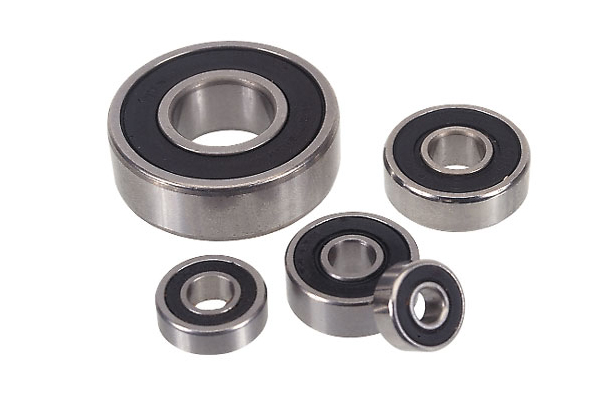 |
Ball bearing guides can be fitted to the cutter shank above the cutting edges, or on a spigot machined on the end or nose of the cutter. |
|||
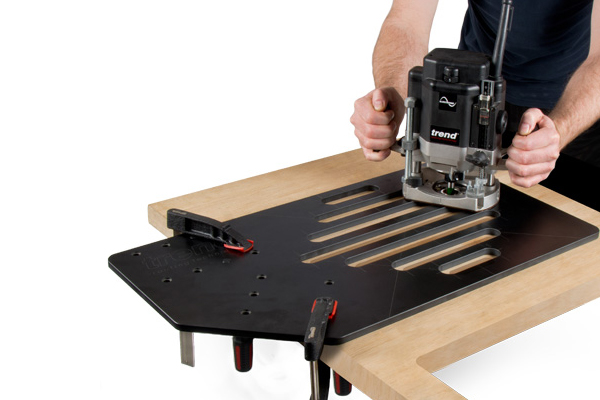 |
Shank-mounted guidesShank-mounted guides are designed to follow a template that is mounted above the workpiece, or, if used in a router table, a template that is mounted below the workpiece. |
|||
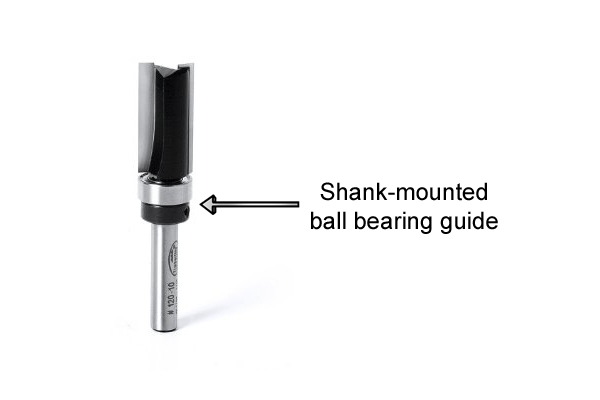 |
Many cutters with shank-mounted guides are designed for producing grooves in the surface of materials, as well forming the edge.
During either application, the bearing runs along the edge of the template, keeping the position of the cut consistent throughout. |
|||
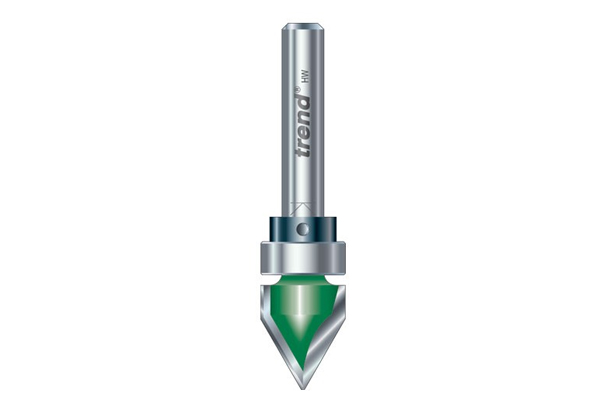 |
Profiling cutters and some types of panel, radius, and bevel cutters have shank-mounted bearing guides. |
|||
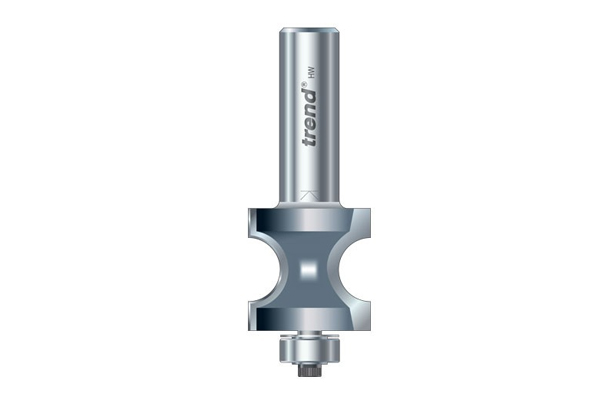 |
Bottom guidesRouter cutters with guides fitted to their end are designed for edge work only. |
|||
 |
||||
Removing and replacing |
||||
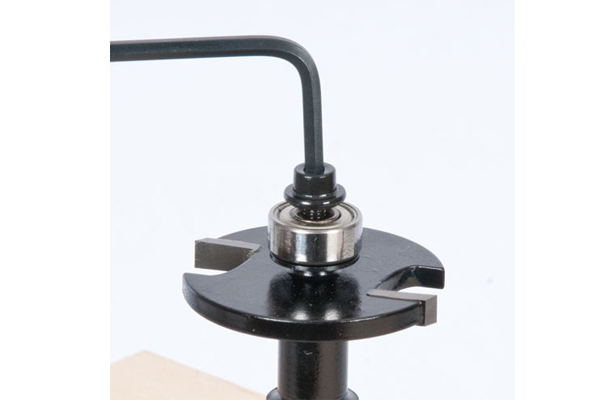 |
With most router cutters, the ball bearing guide can be removed and replaced by removing a retaining screw, detaching it, then sliding on a new guide and attaching a new screw, and there are spare bearing fixing packs available to buy. There are two main reasons why you may wish to do this: |
|||
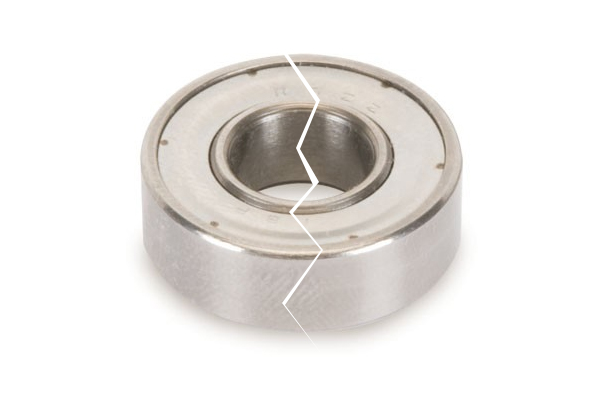 |
Damaged or broken bearingsBall-bearing guides should be considered as consumable and non-serviceable items. They may need replacing during the life of the cutter. If the bearing becomes dented, cracked or stiff, you should replace it with a new one before using the cutter again. Bearings are available to buy as spares individually or in packs. |
|||
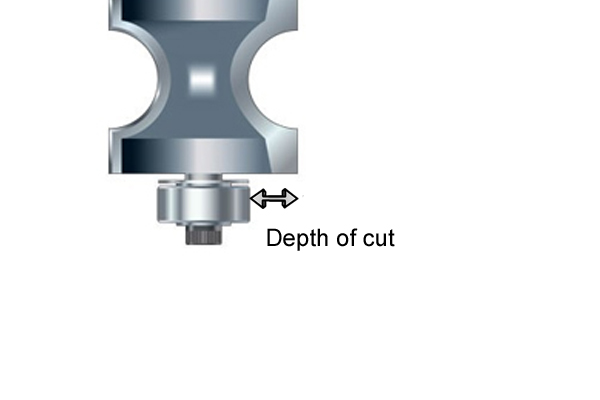 |
Altering the cutting depthAs with a pin guide, the distance between the outside edge of the guide and the tip of the cutting edge will determine the width or depth of the cut produced. Changing the ball-bearing guide for one of a different diameter allows you to alter this width or depth. |
|||
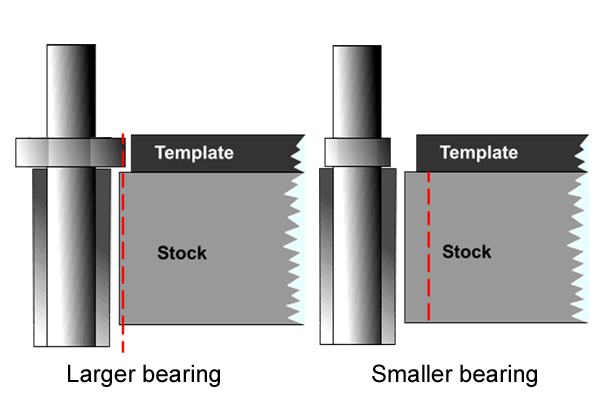 |
If the bearing is smaller or larger in diameter than the cutter, the cut produced will be offset from the template or workpiece edge. |
|||
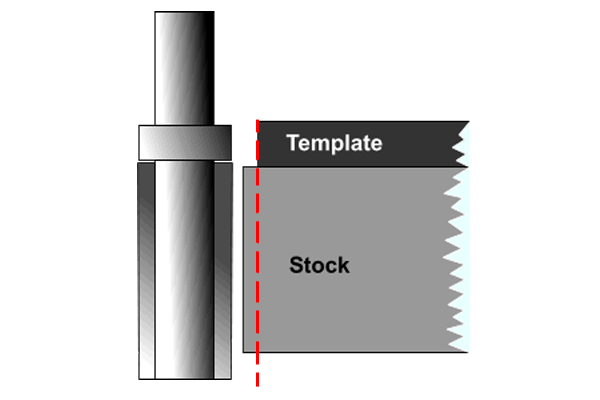 |
If the guide is the same diameter as the cutter itself, and you're routing in the surface of a material, the resulting cut will not be offset.
If you're routing along the edge of material, any material extending past the template will be removed. |
|||
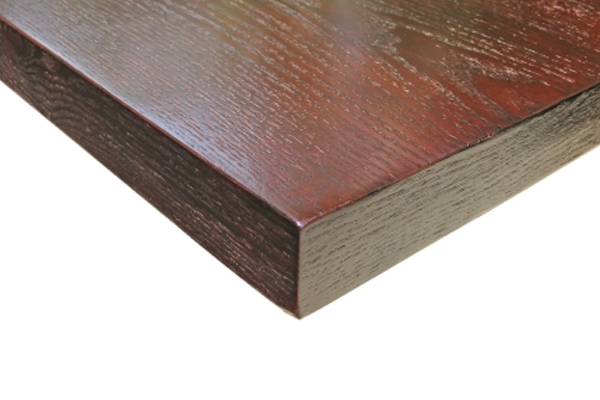 |
Please note that Trend bearing guided trimming and profiling cutters are fitted with guide bearings that are marginally oversized in order to minimise the effects of surface scoring and to avoid any cut-back of a veneered edge to produce a sharp, square corner when jointing or facing the trimmed edge. |
|||
 |
||||
Ball bearing guidesvs.pin guides |
||||
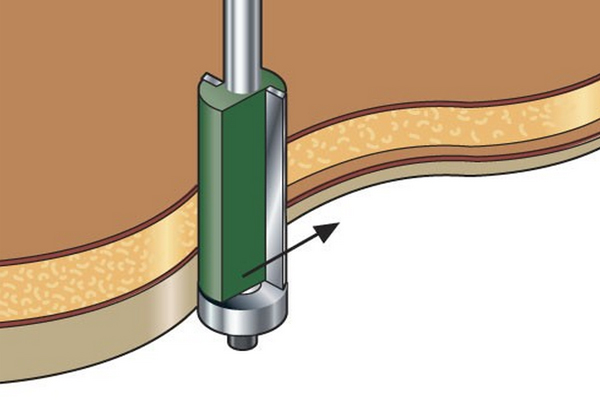 |
Self-guiding cutters come with a ball bearing or pin guide, which is designed to run against the edge of the workpiece, or against a template mounted above or below it.
This allows the cutter to follow a curved edge and avoids the need to use a side fence or parallel guide for straight edge work. |
|||
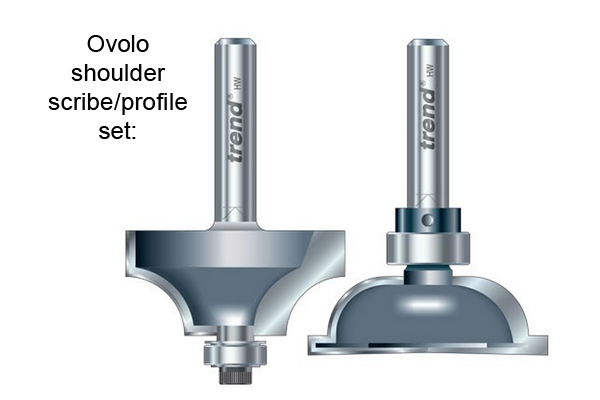 |
The precision afforded by ball bearing, or pin guided cutters is often critical when using interlocking or matched profile scribing cutters. |
|||
Router cutters with ball bearing guides |
||||
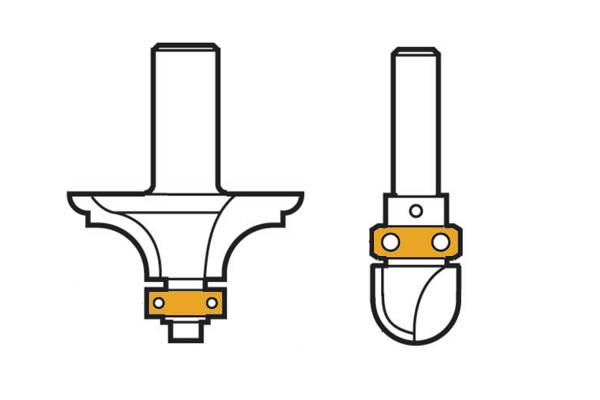 |
Ball bearing guides can be fitted to the cutter shank above the cutting edges, or on a spigot machined on the end or nose of the cutter. They are generally held in place by either a socket headed screw or hexagonal nut.  |
|||
The advantages and disadvantages of router cutters with ball bearing guides |
||||
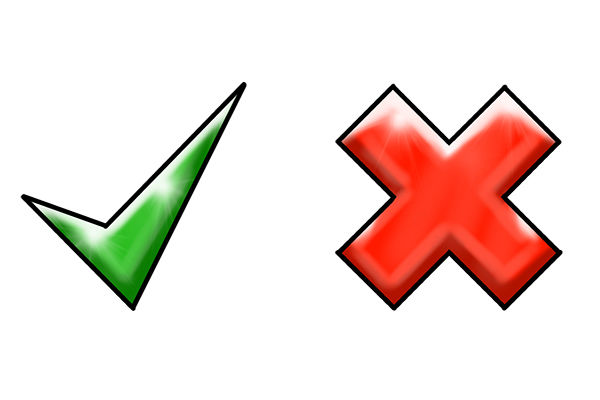 |
ADVANTAGES |
|
DISADVANTAGES |
|||||
|
||||||||
Router cutters with pin guides |
||||
 |
Pin guides consist of a cylindrical metal section fixed to the end of the cutter. They are used in similar applications as bearing guided types, yet are less versatile, due to the fact that they cannot be replaced with larger or smaller pins. |
|||
The advantages and disadvantages router cutters with pin guides |
||||
 |
ADVANTAGES |
|
DISADVANTAGES |
|||||
|
|
|||||||
Which one should you choose? |
||||
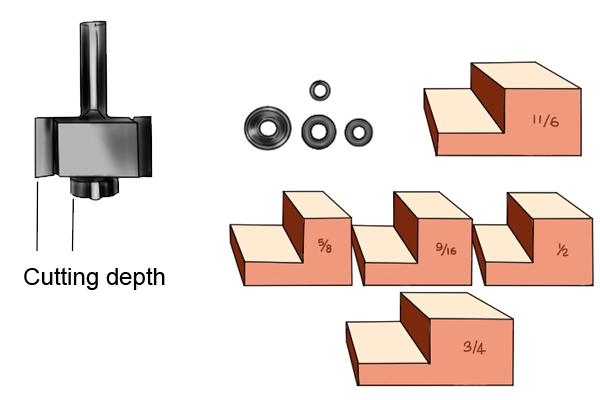 |
ball bearing guided cutters have an advantage over solid pin guided cutters, in that they are less likely to mark the material, and are more cost effective if you want to alter the cutting depth without using a side fence or similar guide.
Pin-guided cutters are useful for very intricate curves. |
|||
 |
||||








